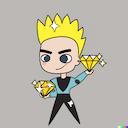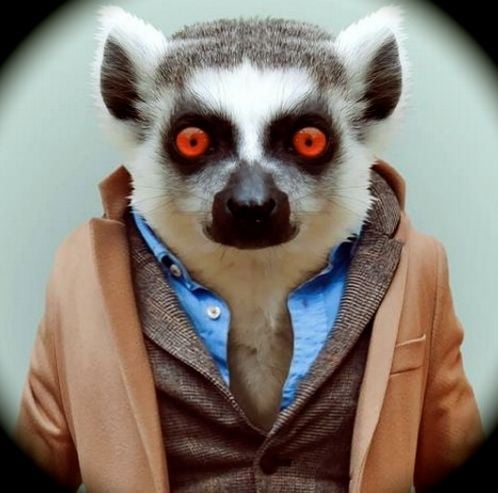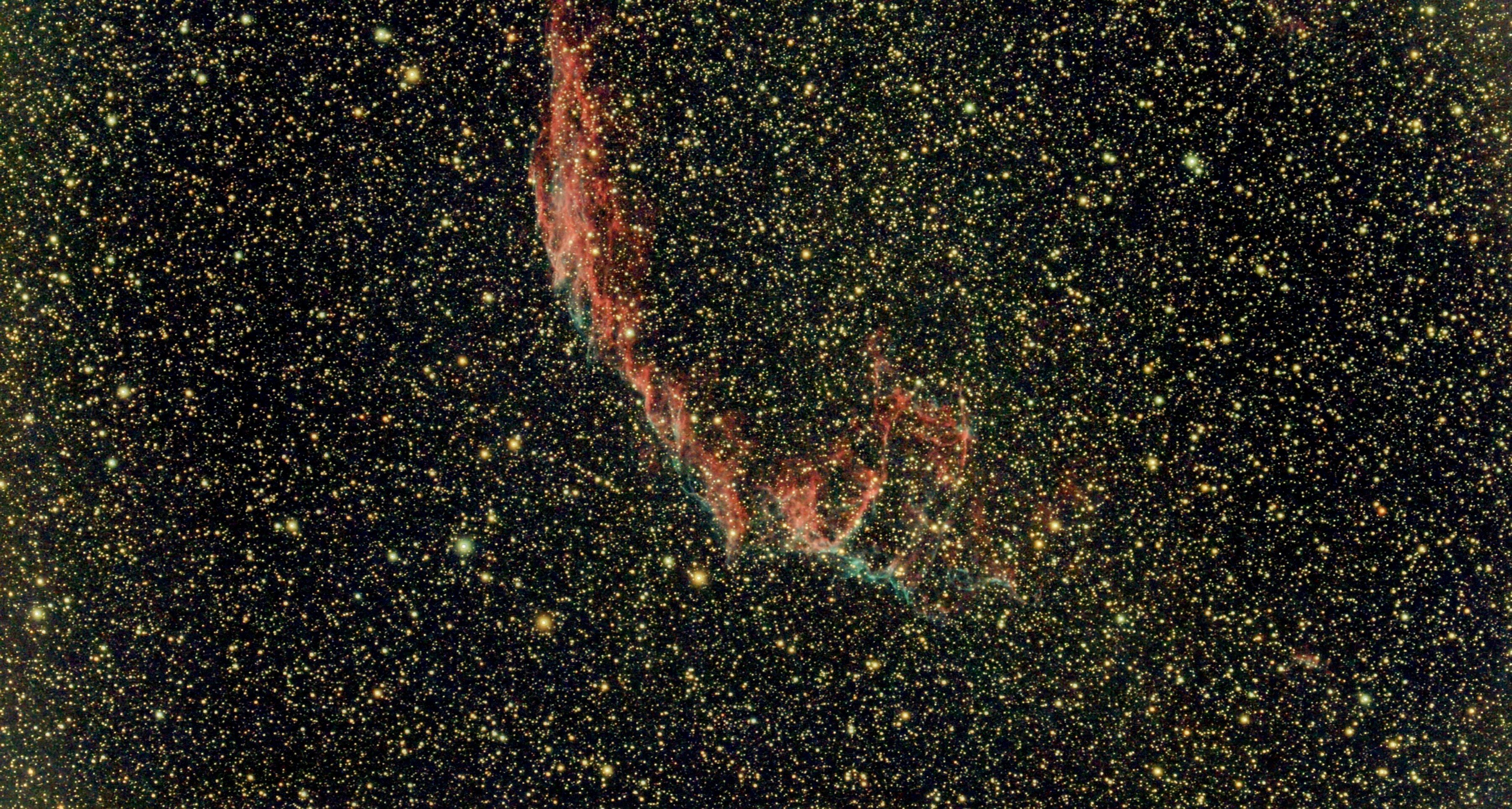A request by @verdeviento@mander.xyz for some more info on talons.
Owls are a type of raptor. The origin of the word raptor comes from the Latin word rapere, which means “to seize.” That is because for a raptor, their feet are key to their survival. They catch their food, they’re used for grooming, and they’re the main line of defense.
Basic Anatomy
There are many differences in owl leg and foot anatomy when compared to other birds.
Owl foot and leg bones are shorter and thicker than other birds. This allows for a thicker muscular structure, even greater than that of most eagles many times greater in size. This sturdiness also helps the feet and legs withstand impacting their prey at high speed.
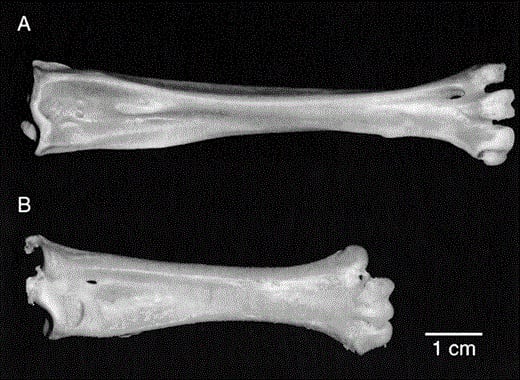 A is a hawk leg bone, B is an owl leg bone
A is a hawk leg bone, B is an owl leg bone
Another advantage owls over other raptors is calcification of the leg tendons. This hardening occurs in areas of high stress. It allows more structural support in areas that need it and serves as a calcium reserve should a bone injury occur. These structures are called sesamoids.
Owl tendons are also arranged in a way that they are tensed when the bird is relaxed. This is the opposite of how our hands work. To grip tighter, we need to exert more and more force, but the owl just has to use energy to release its grip. This allows them to exert maximum force holding onto prey with minimal effort. It is also what lets them stay gripped to their perch when they sleep without falling off. They must consciously let go to relax their grip.
This article has some good animations on the way the tendons lock up the grip. Animated gifs work for me on Boost, but not Liftoff so I’ll just put the link here so I know everyone can look at it.
Owls are zygodactyl, meaning they have toes that are arranged in a 2 rear facing / 2 front facing, as opposed to most birds which are anisodactyl, with a 3 rear facing / 1 front facing arrangement. Owl toes are also of equal length, as opposed to having one longer toe in front. Owls do have the ability to move their fourth toe to either the front or back to allow force to be distributed in different ways.
 Typical bird foot
Typical bird foot
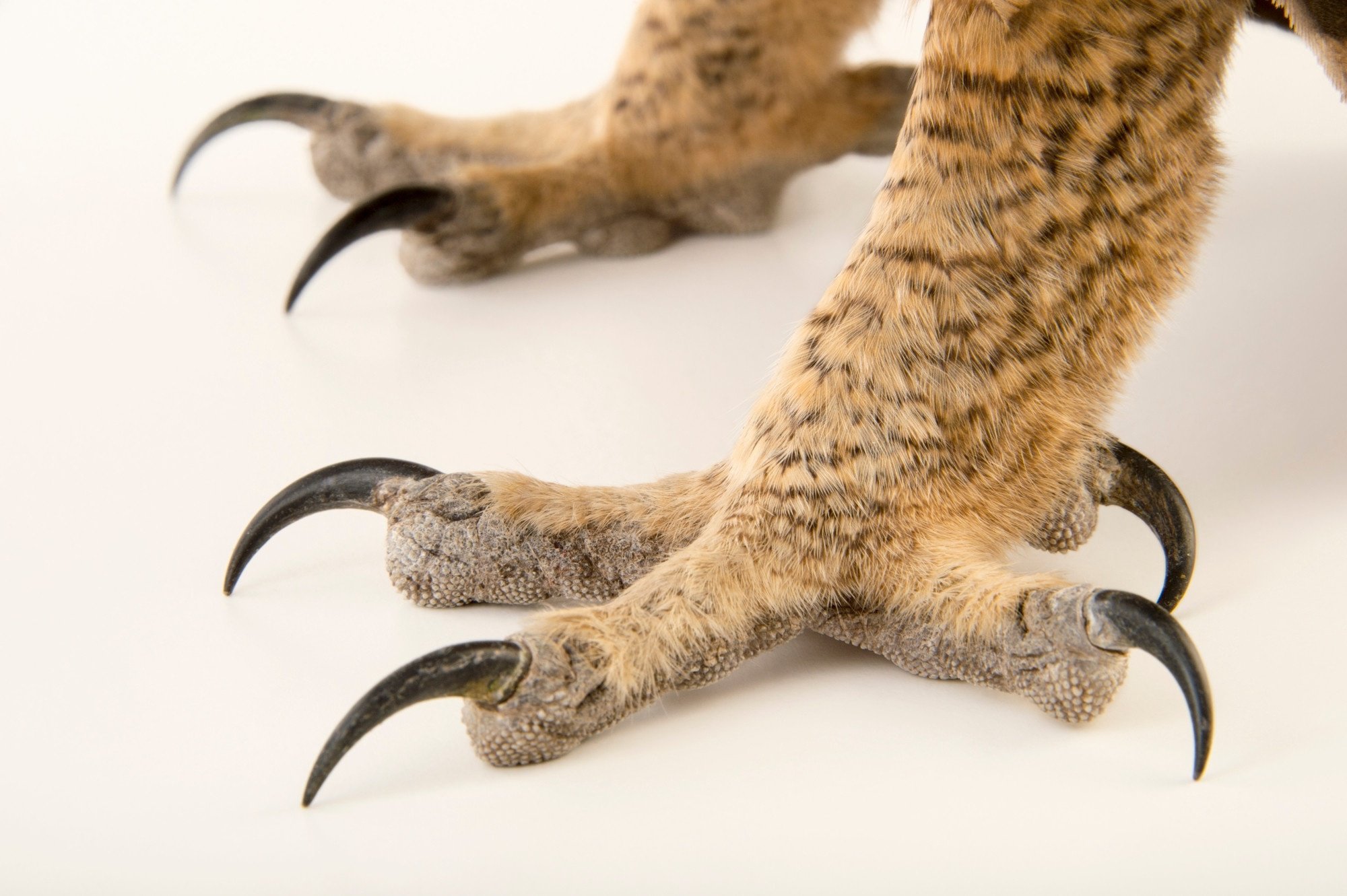 Owl 2 by 2 grip
Owl 2 by 2 grip
At the end of their toes are the talons. Owl talons are made of keratin, just like our fingernails. They have a hard outer layer and a soft inner layer, which makes them very hard, but also maintain some flexibility.
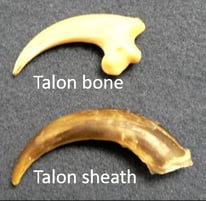 Inner and outer talon layers
Inner and outer talon layers
Owl talons vary in size by species, but they are relatively long compared to their toe size. This increases the leverage in can apply. The Eurasian Eagle Owl has talons that can be up to 4 inches / 10 cm long.
 Eurasian Eagle Owl feet
Eurasian Eagle Owl feet
Grooming
Preening is an important part in owl grooming as it maintains the integrity of their feathers. Owls use their feet to arrange feathers, remove debris and parasites, and spread oils throughout the feathers.
Most birds have a ridge on their talons that aid in this, but the Barn Owls have evolved serrations that look and act like a comb.
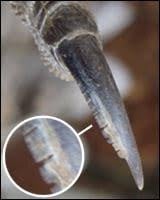 Barn Owl talon
Barn Owl talon
 Another view
Another view
Hunting
Why do owls hunt with their feet and not their beaks? Owls have short and rather weak beaks. The tip is curved and can generate a good amount of tearing force, but it is not good for offense or defense. By using the feet, they not only have much great mechanical advantage, they also keep any danger as far from their face as possible. Owl eyes and ears are their means of locating food, so they need to keep them protected.
Owls will swoop down on prey with their talons spread to allow the maximum grabbing area possible. Many hunt at night and cant actually see their prey, so this increases the odds of being on target. The 2 by 2 toe arrangement allows maximum gripping force to be evenly distributed. With the toe that can move from back to front, they can adjust their grip if they somewhat miss their mark. The undersides of the feet are also highly textured to add additional grippiness. The feet are also covered with many sensory nerves to detect vibrations in the air or on the ground, so that also helps them “see” without being able to see.
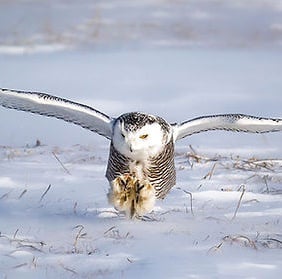 Splayed talons to increase grabbing area
Splayed talons to increase grabbing area
 Grippy surface of foot
Grippy surface of foot
Once they have their grip on their prey, they do not use their talons to kill like hawks or eagles do. All the combined mechanical advantage of their bones and tendons is used like a hydraulic press to finish off their prey. Most eagles and hawks have much less grip strength because they do use their talons to kill. A Bald Eagle only has half the grip strength of a Great Horned Owl, even though the eagle is much larger.
Owl grip strength is not to be overlooked. The Great Horned Owl is one of the strongest birds, with a grip strength approaching 500 psi / 3450 kPa. An adult human can grip around 150 psi / 1025 kPa. A pitbull bite is less than 250 psi / 1700 kPa, and only when we reach dogs the size of an English Mastiff do we reach dogs large enough to generate as much gripping force as a Great Horned Owl. To compare sizes, an adult Mastiff is over 200 pounds / 90 kg, where a GHO weighs 3 pounds / 1.4 kg.
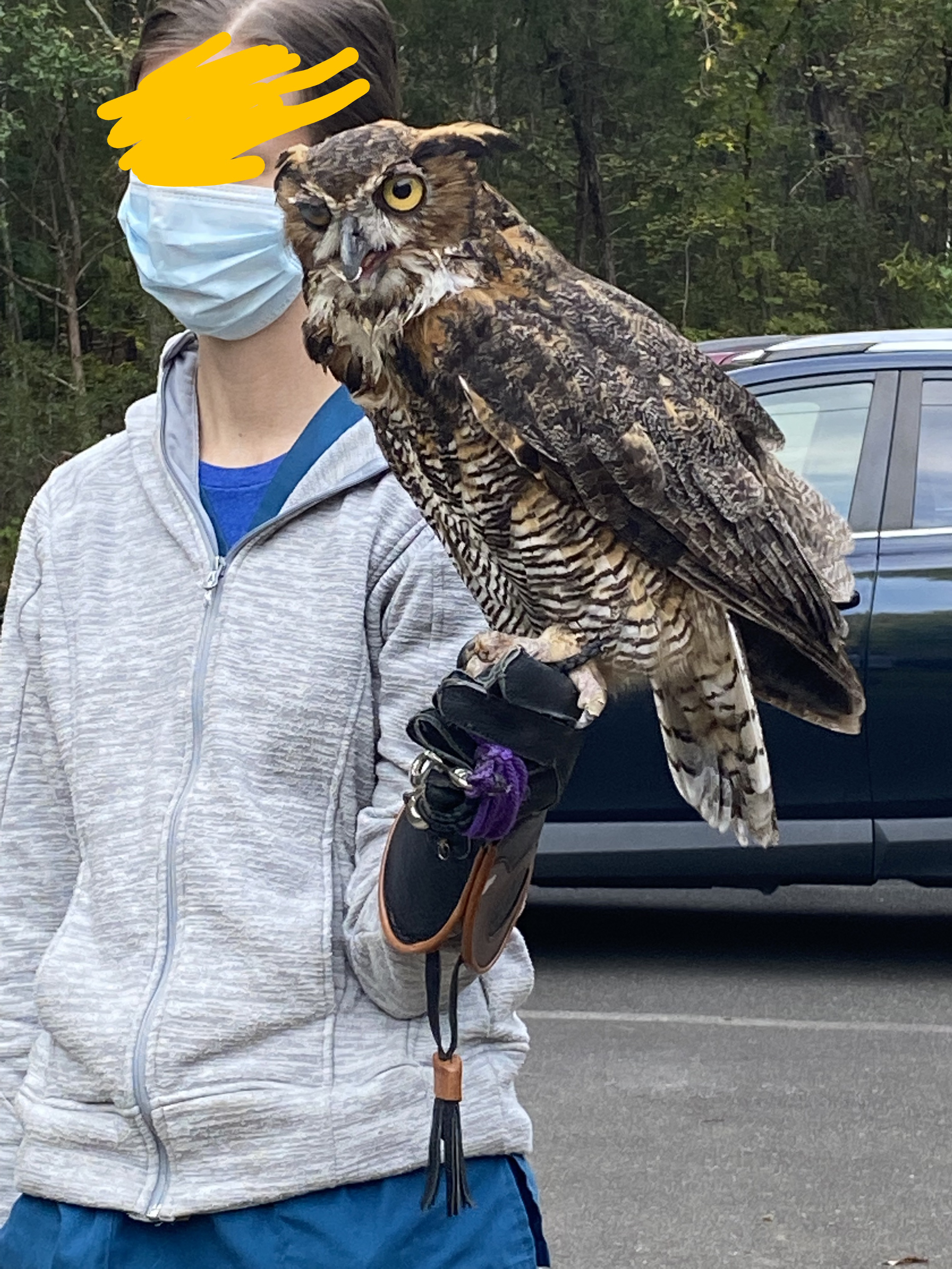 GHO vs Mastiff size comparison
GHO vs Mastiff size comparison

Forgot to add my sources! Here’s where most of this info came from.
Awesome post! Very informative and concise.
Thank you! It was hard picking what to leave out. Much of this anatomy had been studied in great detail since it’s the most unique characteristic of raptors. Many people have written long scientific studies on just each individual fact I included with all kinds of pictures and radiolicic images of bones and fancy statistics. This isn’t my career though, so this was enough work for me! 😉
Great post! I appreciate all of your effort!
Glad you liked it! I knew it would be a long post because there are so many parts working together to make the system as amazing as it is. I couldn’t just talk about one or 2 things since it would just make more questions, so I tried to cover all the basics.
This was a very interesting read, thank you.
I am glad you liked it! This post was a lot of effort and I’m glad Lemmy didn’t screw it up while I was making the post itself, and I also got to learn a lot while making it.
I would like to subscribe to owl facts
I would like you to subscribe!
I got a good owl coming up for tomorrow. I see lots of posts about it other places, but they all miss the best thing about it!
This is one of the best posts on lemmy I’ve seen yet. Thanks for the great write up.
I had no idea that they were a kind of raptor. Nor how strong they are.
I had no idea that they were a kind of raptor. Nor how strong they are.
They are masters of surprise after all!
I’m very grateful you’ve all enjoyed this. I enjoy finding these things for you all, and I’m glad this community is having success as an actual fanbase for owls instead of just a place for cute or silly pics.
I’m fully prepared to believe these things evolved from dinosaurs.
Check out my latest post made just for you!
Like the person below you said, it’s pretty conclusive that they did evolve from the dinos, but much like anything, some people will still disagree for reasons.
If you haven’t seen the post about stilt-owls you are in for some fearsome owl news there too! That’s one of my favorite posts.
All birds are beautiful, but also terrifying creatures. They are fast, very strong for their size, and have a ferrocious will to survive. They will steal, kill, and do whatever it takes. Even those tiny songbirds in your feeder will raid nests and kill chicks. They’ll group up to fight other birds or kill animals bigger than them. If you really watch birds, you will have no doubts that no dinosaur could be scarier than they are!
I mean, all birds did.
They are literally dinosaurs.
It’s true! This is the taxonomy of a Barn Owl:

This is amaaaazzzing! Thank you so much for all the research, clear summaries, and links. I had no idea that owls’ feet were so specialized and different from other birds. I’ve learned a lot! Going to bookmark this keep rereading to absorb all the things.
Awesome! I’m really glad you saw it. If you haven’t scrolled all the comments, check those out too. I got to answer some good follow up questions.
They really do have a lot of specialized body parts, plus they’re super cute!
If you come up with any other questions, just ask! I may not write another essay, but I’ll answer anything the best I can.
Oh nice, more goodies! Do you know offhand how it’s possible for the toe to rotate? Is it not fixed in the joint as with other birds (and mammals)? Or something about where the joint attachment is located?
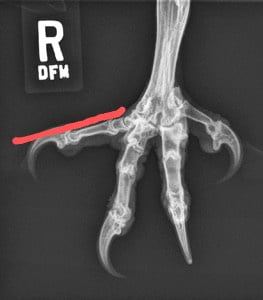
So above is the fancy moveable owl toe, higher with the red line. Looking at it compared to the ibis foot below, the owl toe seems to be more on the side of the foot as compared to angled but still pointing forward on the ibis. The owl’s joint also looks more rounded to me than the flat looking surface of the ibis, making that seem to be more of a hinge type joint.
It’s hard to find x-rays that aren’t of injured feet, and most articles mentioning it just say “they have a more flexible joint than other birds” and leave it at that. But comparing the flexible toe to the owl’s 2 front tires, there’s definitely a motive difference in the joint structure.
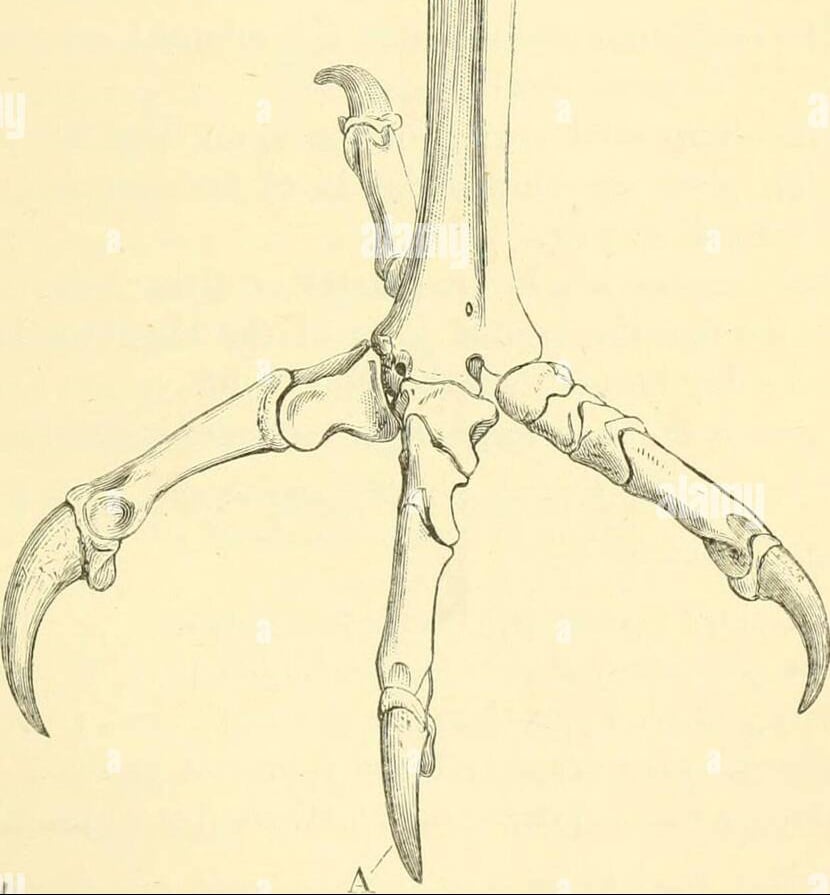
You’re right, that joint does look different with the two small articulations, though it’s hard to tell if that’s just the angle of the image. So interesting.
This was amazing and you are indeed the spiritual successor to Unidan (but don’t go evil like he did; he broke our hearts).
That was an interesting story. I was very late to Reddit, probably only being there this last 2 or 3 years.
I don’t particularly like attention, and I try to make it very clear to you guys that I am very much not an expert on anything I post, I’m just a fan that likes to learn interesting facts about things.
I’m just hear to have fun, and when I saw those group was reformed on Lemmy but was just sitting there, it decided it was a small enough place where I could try to help.
About the picture with the owl on top of the glove: Are they fully relaxed on there - meaning, are they gripping it with full force? If so, how does the glove prevent your arm or hand from being crushed? I feel like leather would only really protect you from their talons.
Great question! This could be a post in itself really.
They have very fine control over there feet. Think of all the abilities you would need if your hands and feet were combined into one pair of appendages! Just like you can be relaxed overall, but make a tight fist or relax it, they can do the same.
If you haven’t looked at that Atlantic magazine link in the tendon section or the reference list, that shows how the musculature works like a pulley and lever system to increase or decrease grip. They have control over their muscles like we do, so they can regulate his hard they want to grip. They just do it the opposite way that we would, we can relax to loosen up, but they engage muscles to loosen up. I hope that makes sense.
They also have a third leg joint so their legs are kinda Z shaped instead of > like human legs, so their geometry is very different to ours. That’s why it looks funny to us to watch owls run!
As to the gloves, their construction is to protect both the handler and the birds, so there are different construction methods for different birds.
The leather offers some protection from the talons of course, but it also withstands more pressure and the thickness spreads the force over a wider area to learn the potential damage. Skin will rip at IIRC about 50 psi, which even the small owls can do easily, especially at the tips of the talons.
There are bigger and thicker gloves for larger birds. They have increasing layers of leather to withstand the talons and the added pressure. Even with gloves though, I read numerous accounts of owls breaking people’s fingers or making their arms go numb for a few days. A properly built and sized glove with keep the raptor feeling safe and secure so they feel the need to use less grip on the handler too.
Here’s a good article with more details and pictures!
Thank you for your reply! That’s really interesting stuff.
And if anyone else immediately thought about looking up running owls: here you go!
That is a great video!
Here’s a pic so you can actually see that extra leg bone. The feathers don’t help! 😁

The bone is called the tarsometatarsus, and is only found in birds and some dinosaurs.
Wow! Thank you!
Glad you liked it! I knew it was going to be a good deal if effort to get everything collected and to find pics and all that. I try to save the real in depth things for the weekend so I have more time to work on it and to make sure more people see it after I spend the time on it.
The main Lemmy app I use doesn’t save drafts, so I had to do this one on my laptop and then get it back to my phone where I had all the pics. I’ve been looking into Boost which I used to use for Reddit, and that does have drafts, but some other things I don’t like for making posts, so hopefully soon there will be something easier to make bigger posts with more regularly.
Fascinating! Excellent write-up! It was gripping (lol) from start to finish!
It was gripping
Perfect! 🤣
The bit about the toe arrangement was surprising me. Whenever I looked at bird footprints in the snow, I assumed that they were traveling in the direction of the 3 toes. Turns out, I didn’t understand bird feet!
No, you had it right, I probably just phrased it poorly.
I had meant it as in the front toes’ talons curved backwards and the rear talons faced forward.
If we look at our bluebird friend here, you can see his 3 toes are in the front and the single in the back. Sorry if I was confusing!

Same here
Great write up, top tier post. The feathers on the feets look like fur almost. Good stuff thanks for sharing.
Glad you enjoyed it!
Feathers are another potential article. There are a number of types that all serve different purposes. Owl feathers even help with their super hearing!
I’d love to hear more about feathers, especially if there are some species specific features
I’ll see what I can come up with!
I love that little crochet owl toy in the second video!
Great look at the feet in the last clip.
Eagle Owls were one of the first owls that fit be interested in them. I really like their orange eyes.
Nice, that is an important job!
For those that haven’t heard of raptors working at airports:
Hmm I thought of calcification of tendons as a bad thing, an evolutionary defect, or bad diet. Surprised to learn of its advantage to the owl.
I’d like to provide a better answer, but everything I’m finding is above my level of understanding.
From what I can decode, it seems to be of advantage to animals with specialized appendages, which I would consider raptor feet to be. The benefits for owls sound like 1) it adds strength and support to bones subject to significant and repeated shock while being lighter than actual bone, keeping energy expenditure for flight as low as possible, and 2) it prevents damage to the parts of the bone that grow new bone cells. The forces the feet get would normally kill off those cells that repair the bones.
Human leg geometry and the jobs our legs do are very different, so while it causes pain and swelling in us, it seems to be if benefit to a number of animals.
This article covers some various species of animals, all described as possessing specialized appendages if you want to take a shot at reading it. It seems very interesting, but these people are actual biologists, and I’m not 🤯
Secondary ossification center induces and protects growth plate structure
That’s helpful. I guess it’s like some in humans where parts of the skull and spine are cartilaginous at birth and ossify during adolescence. As I read your post on owls, it sounded more like degenerative ossification due to age and repetitive insult, such as in the knees of a carpetlayer or package car driver.
Here’s an image that I think shows what it’s talking about. This is essentially the equivalent of the bird’s finger bone. Looks like it starts off as three bones that are somewhat cartilaginous and by maturity is fused into one bone.
The blue colored sections do sound like what they were referring to in that article. Nice pic!
Nope, this only seems to be listed as an advantage. The other example I saw was giraffe horns. When they’re born, they’re soft cartilage, and then they harden with age.
The usage seems to be key. You wouldn’t want to be a construction worker with bird bones, but a bird wouldn’t be able to stand, let alone fly, with big thick bones.
This is part of what is so well done about your post. There are so many surprises and misconceptions illuminated (at least for me who doesn’t know much about owls). Thickened leg bones, weak beaks, rotatable talons, how can this be? Thanks again for this post.
I learned so much making it, and I cut a bunch off stuff out because there is just so much.
The weak beak was a bit of a surprise for me also. Even for defense, the priority goes fly away, feet, wings, and maaaaybe beak as a last resort, but it’s so short and down turned it isn’t much good for fighting.
The toe being so thumb-like was the big shock for me. I always wondered about it in photos where toes were in different arrangements, but that it has that much mobility was a huge surprise.
my toxic trait is wanting to tickle them feet
I absolutely want to touch them. They look like a silicone kitchen scrubbee!
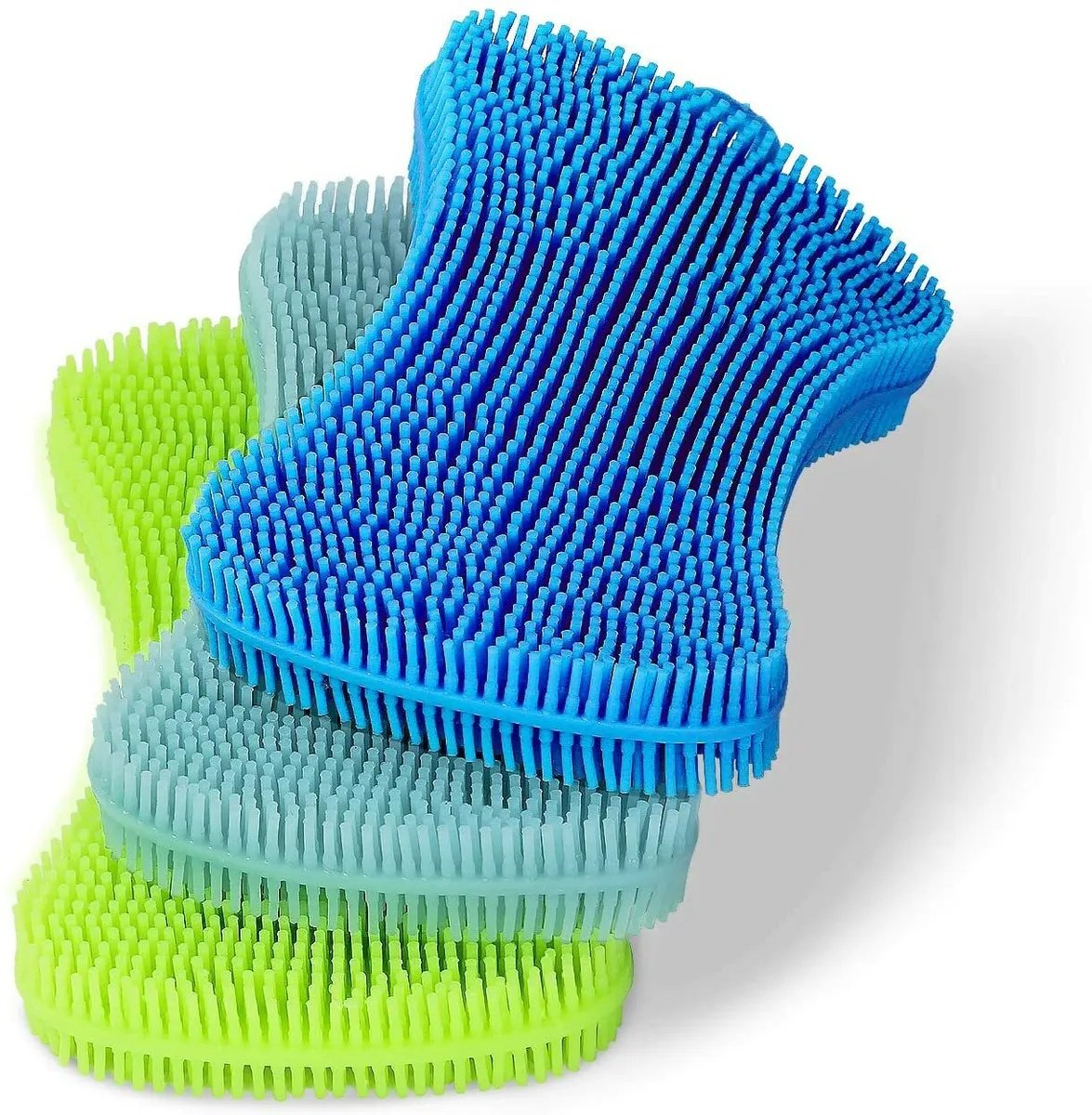
They feel surprisingly rough, almost like snakeskin
Why Mr. Owl, what rough feet you have!
The better to eat you with, my dear!
- Little Red Riding Hoo
I’ve touched a hippo’s nose, and an alligator’s teeth, but not an owl…yet… 😓
You should see if there’s a wildlife rehab centre nearby that you can volunteer at (: lots of owls (unfortunately) and a good chance to be able to feed or move them around. I’ve been stabbed by a few owl talons. Saw-whets are incredibly painful for such small little things.
I’ve looked into it a couple times. There’s a place about 15 minutes from me. I think they used to train volunteers twice a year, then with Covid it went to once a year, and they’ve also raised their required minimum commitment due to lack of help.
I’m looking for a new job right now, so maybe my schedule will work out better after that gets figured out. I do think it would be mostly fun (I’m sure there’s some icky cleanup to do, everybody poops and gets sick!) and I know I would learn a lot though.
They get a lot of neat animals since we still have a decent amount of woods and farms in the area, so they have beavers and foxes and raccoons and such in addition to the birds. I kinda want to play with possums too. I feel they’re underappreciated.
There’s definitely some not so fun parts such as the poop (bald eagles will paint the walls white and green), and unfortunately being a place for trauma there will be deaths and terrible injuries.
But it’s also quite rewarding. Depending on the place, the one I volunteered at let us take animals home to care for like baby squirrels, birds and bunnies which required feeding every few hours. Also the highlight was being able to take the recovered animals out and release them back into the wild.
I’m sure the good parts outweigh the icky stuff. I’ll keep me eye out for my chance to get more hands on. It’s cool you didn’t have to do everything at the center, that would make things much more convenient.
When I look up the centers for the owl of the day posts I like the release photos. The boxes remind me of Happy Meal boxes, so it feels like they got the owl as the surprise inside 🤣
Penguins were the most dramatic poos I’ve gotten to see so far. It sounds like it had a similar pressurized quality like the eagles!
Funnily enough I thought snakes are pretty smooth in my experience.
I like snakes in that they feel both smooth and textured at the same time. The closest I can think of is my bicycle grips. Grabby for traction, but not so much it would hurt your hand.



